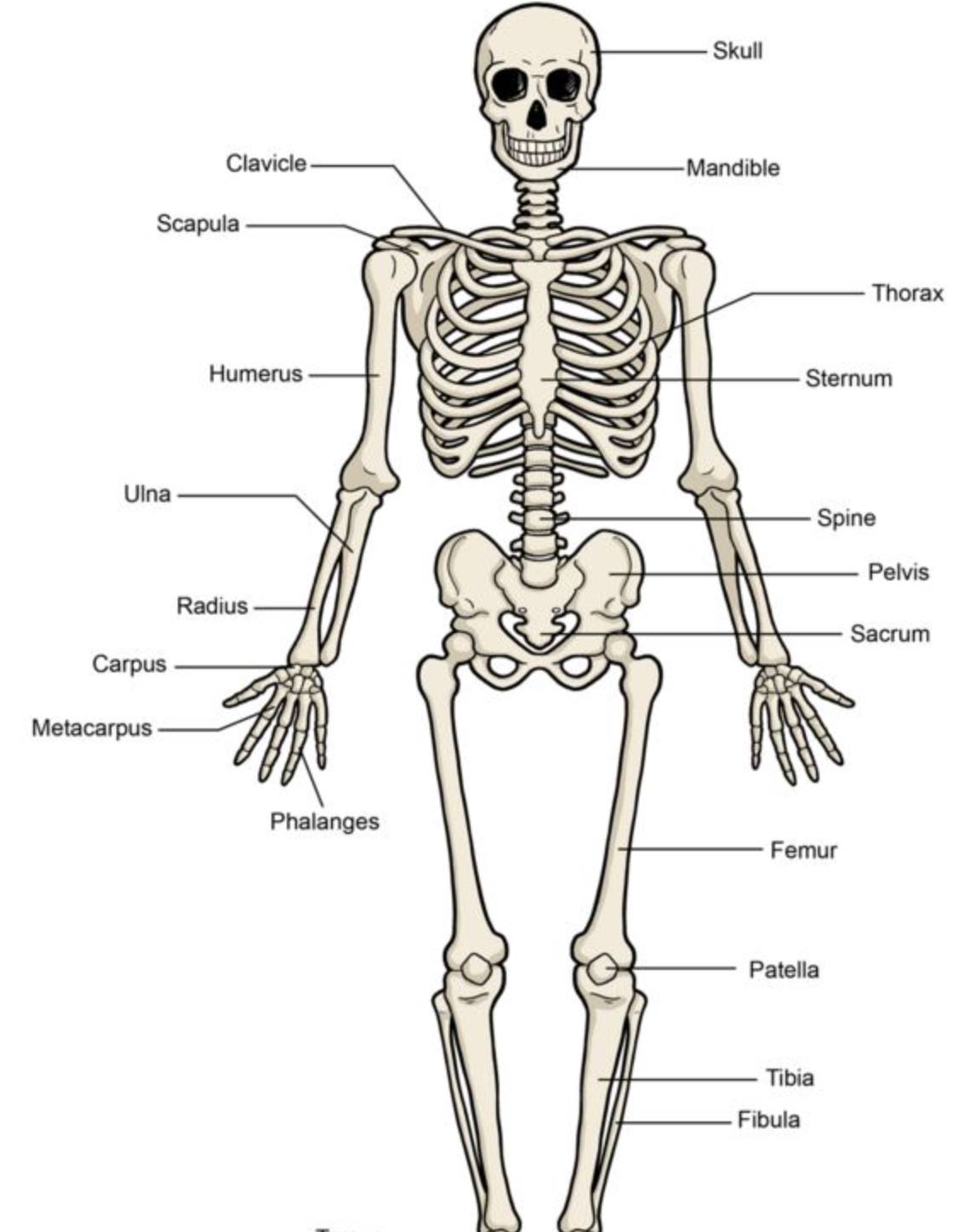Skeletal System Labeled: Understanding The Framework Of The Human Body
The skeletal system is a crucial aspect of human anatomy, serving as the framework that supports our bodies and facilitates movement. Understanding the skeletal system labeled is essential for anyone interested in biology, medicine, or health sciences. In this article, we will explore the various components of the skeletal system, their functions, and the importance of maintaining skeletal health.
The human skeletal system comprises 206 bones in adults, along with cartilage, ligaments, and joints. Each of these elements plays a vital role in the overall functioning of the body. By labeling and understanding the skeletal system, we can better appreciate how our bodies work and how to care for them. This article will provide a comprehensive overview of the skeletal system, including detailed labeling and descriptions of its components.
Whether you are a student, a healthcare professional, or simply someone curious about the human body, this article aims to deliver valuable insights into the skeletal system. We will delve into the anatomy, functions, and health implications of the skeletal system, enabling you to grasp its significance fully.
Table of Contents
- Introduction
- Anatomy of the Skeletal System
- Types of Bones
- Major Bones of the Human Body
- Types of Joints
- Maintaining Skeletal Health
- Common Skeletal Conditions
- Conclusion
Anatomy of the Skeletal System
The skeletal system is a complex structure made up of bones, cartilage, and connective tissues. It serves multiple functions, including providing support and shape to the body, facilitating movement, and protecting vital organs. The skeletal system is divided into two main parts: the axial skeleton and the appendicular skeleton.
Axial Skeleton
The axial skeleton consists of 80 bones, including the skull, vertebral column, and rib cage. It serves as the central core of the body and plays a crucial role in protecting the brain, spinal cord, and thoracic organs.
Appendicular Skeleton
The appendicular skeleton comprises 126 bones, including the limbs and their attachments to the axial skeleton. It is responsible for movement and interaction with the environment.
Types of Bones
Bones can be categorized into several types based on their shapes and functions. Understanding these types is essential for studying the skeletal system labeled.
- Long Bones: Found in the arms and legs, these bones are longer than they are wide and are crucial for movement.
- Short Bones: These bones are roughly cube-shaped and provide stability and support, such as the bones in the wrist.
- Flat Bones: These bones are thin and flattened, providing protection for vital organs, like the skull and ribs.
- Irregular Bones: These bones have complex shapes and functions, such as the vertebrae.
- Sesamoid Bones: These are small, round bones that form within tendons, such as the patella (kneecap).
Major Bones of the Human Body
Understanding the major bones of the human body is essential when discussing the skeletal system labeled. Here is a table summarizing some of the key bones:
| Bone Name | Location | Function |
|---|---|---|
| Skull | Head | Protects the brain |
| Clavicle | Collarbone | Connects the arm to the body |
| Sternum | Chest | Protects the heart and lungs |
| Humerus | Upper arm | Facilitates arm movement |
| Femur | Thigh | Supports body weight and movement |
Types of Joints
Joints are where two or more bones meet, allowing for movement and flexibility. Understanding the types of joints is crucial for comprehending the skeletal system labeled.
- Synovial Joints: These are the most mobile joints, such as the knee and elbow, allowing for a wide range of motion.
- Cartilaginous Joints: These joints allow limited movement, such as the joints between vertebrae.
- Fibrous Joints: These joints are immovable, such as those in the skull.
Maintaining Skeletal Health
Maintaining skeletal health is vital for overall well-being. Here are some essential tips:
- Nutrition: Consuming a balanced diet rich in calcium and vitamin D supports bone health.
- Exercise: Regular weight-bearing exercises strengthen bones and improve balance.
- Avoiding Smoking and Excessive Alcohol: These habits can weaken bones and increase the risk of fractures.
Common Skeletal Conditions
Several conditions can affect the skeletal system, leading to pain and mobility issues. Here are some common skeletal conditions:
- Osteoporosis: A condition characterized by weakened bones, increasing the risk of fractures.
- Arthritis: Inflammation of the joints, causing pain and stiffness.
- Scoliosis: A curvature of the spine that can affect posture and movement.
Conclusion
In conclusion, the skeletal system is a vital component of the human body, providing structure, support, and protection. Understanding the skeletal system labeled helps us appreciate the complexity of our anatomy and the importance of maintaining skeletal health. We encourage you to take proactive steps to care for your bones and joints, ensuring a healthy and active lifestyle.
If you found this article helpful, please leave a comment below, share it with your friends, or explore other articles on our site to learn more about human anatomy and health.
Thank you for reading, and we hope to see you back here for more insightful content!
Discovering Brazil On The Map: A Comprehensive Guide
Exploring The World Of Japan Lorry: An In-Depth Look At Trucks In Japan
Topgolf Vertical Image: The Ultimate Guide To Enjoying Golf Entertainment
![[DIAGRAM] Human Skeleton Label Diagram](https://i2.wp.com/brooksidepress.org/anatomy/wp-content/uploads/2015/02/md0006_img_20.jpg)
[DIAGRAM] Human Skeleton Label Diagram

Unlabeled Bone Diagrams

The Human Skeleton Bones, Structure & Function